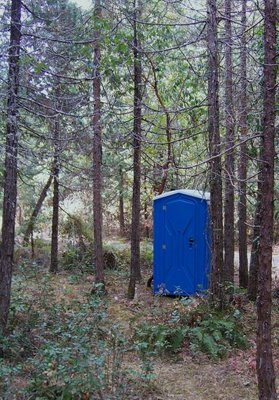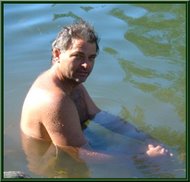Sadly, The Big Guy Wouldn't Get In The Car...
 I hate it when big and scary and beautiful creatures are killed because people are scared of them.
I hate it when big and scary and beautiful creatures are killed because people are scared of them.
Why not kill all cars? They are more dangerous than this Alligator.
This is a big gator, to be sure. I saw one this big, once, at the Miami Serpentarium. The one that was there had bit off part of its own tail and so was shorter than this fella, but the head was just as big.
The biggest Croc I ever saw
( http://aeleope.blogspot.com/2006/07/biggest-croc-i-ever-saw.html
was bigger than this guy by about four or five feet. 
ADDENDUM-- When I was thirteen, we lived in Miami not far from The Miami Serpentarium. My brother and I would ride our bikes down to the Serpentarium about once a month, and watch the most amazing snake shows one could imagine. The proprietor, a guy named Haast, is one of those human beings that you never ever ever forget in your entire life. At thirteen, the only person I could imagine who was cooler than he was, was Neil Armstrong. Haast was close to Neil Armstrong in coolness. And we'd met him many times...
My brother and I both kept California Gopher Snakes as pets. Once a month, we would buy scared little mice at the pet store and toss them into the aquarium and watch their eyes bug out as the snake bit them and crushed them over a period of about ten minutes. Then the snake would eat the dead mouse head first whole. A few days later, we would clean poop out of the glass cage and change the newspaper. We always made it a habit of taking our safe little mice squeezing snakes on our bikes with us to the Serpentarium, where we would stuff them down our pants and sneak them inside.
I don't know... Maybe it was like taking a baseball glove to a ballgame. You do it because you want to feel like you are participating in what is transpiring before you. Haast is grappling with a fourteen foot King Cobra on a lawn in front of you, and you are fondling a little gopher snake in your pants...
King Cobra...
Little Gopher snake in your pants...
See the connection?
I found this article about Haast by googling. What a man that guy was!
FLASHBACK THE MIAMI SERPENTARIUM
'Miami snakeman' is 95 and still injects himself with venom
BY LUISA YANEZ
lyanez@MiamiHerald.com
FOR THE MIAMI HERALD
IN PUNTA GORDA: Bill Hasst sold his Miami Serpentarium site in Pinecrest in 1984, and settled in southwest Florida. 'There is no reason to visit Miami. I've outlived all my friends down there.'
More photos
Slide Show The Miami Serpentarium
King cobras. Green mambas. Palm vipers. Name a deadly snake and Bill Haast has either tamed it or been bitten by it.
For almost four decades, Haast charmed curious tourists who flocked to his South Dixie Highway attraction, the Miami Serpentarium, to watch his snake show.
Haast's death-defying act didn't disappoint. In his trademark white lab coat, he would approach a venomous reptile, lure it with one hand and grab its head with the other. He would shove the snake's fangs into the top of a vial and watch the venom trickle down.
Jaws dropped. Children shrieked in horrified glee.
''It was the best snake show there ever will be,'' said George Van Horn, a frequent visitor who now runs a similar attraction in Central Florida.
Haast, the world-renowned ''Miami snakeman,'' is now 95 and living on a sprawling Punta Gorda ranch with his third wife, Nancy -- and 400 snakes that supply his venom-selling Miami Serpentarium Laboratories.
''I know a lot of people in Miami still remember the Serpentarium and wonder what became of me, that's why I'm talking to you,'' said Haast, who would only be interviewed by telephone.
''At 95, he doesn't like to do anything that takes time away from his lab work,'' added his wife.
Haast is still trying to prove a point: He'll go to his grave believing venom can heal.
VENOM `POSTER BOY'
The medical establishment -- and the Food and Drug Administration -- never bought into Haast's enthusiasm for the lethal snake juice as treatment for multiple sclerosis, lupus, arthritis and Parkinson's disease.
In his case, he claims the venom has helped him live a long and healthy life -- with the exception of his snakebitten hands.
''I could become a poster boy for the benefits of venom,'' Haast jokes. ``If I live to be 100 I'll really make the point.''
Every week, Haast still injects his arm with a cocktail of venom from five snakes -- cobras, mambas, kraits, cottonmouths and rattlesnakes.
The injections are a routine he began in 1948 -- the year he opened the Serpentarium -- and continued after he closed it in 1984. Originally, the shots immunized Haast against snake bites, an occupational hazard.
Now, he believes, the long-term benefits of the shots have spared him from many of the maladies of old age. ``I feel like a man in his 60s.''
But Haast no longer can handle the forked-tongued killers that made him famous. He said his last snakebite, Number 173 suffered in 2003 -- courtesy of a Malaysian pit viper -- was the final blow to his hands, already mangled from years of enduring the nerve- and tissue-destroying poison that snakes spew when biting.
His hands are gnarled and deadened, some fingers hang immobile, some look stunted in growth, and a pinky and index finger have been amputated at the knuckle, photographs taken by his wife reveal.
''I can no longer open my hands wide or make a fist,'' Haast explained. ``I can't complain. My hands served me well.''
RESEARCH WAS GOAL
For Haast, the bites, the snakes and the Serpentarium were only a means to an end.
''I always meant for the attraction to support the venom research, but it just kept growing and growing. It became bigger than I expected,'' he said.
Haast really wanted to find the cure or treatment for polio and feels he came close.
In the late 1940s, it occurred to Haast that the symptoms of polio mirrored the nerve and muscle disruption caused by a cobra bite. He gathered 400 cobras and took his findings to a University of Miami researcher. At the UM, Haast led in the testing of the serum on monkeys. The findings were very encouraging, Haast said. But Jonas Salk produced a polio vaccine in April 1955, ending Haast's first effort to turn venom into a miracle drug.
In the 1970s, along with his friend, respected Miami physician Ben Sheppard, Haast distributed PROven, a venom-based serum. Sheppard gave injections to patients with MS. His clinic became famous and was featured on CBS's 60 Minutes.
But the FDA shut it down and banned the drug, saying PROven had not been properly tested for humans. ''Failing at this is one of my biggest regrets,'' Haast said.
THRIVING BUSINESS
Despite the medical debacles, the Serpentarium continued to flourish. During its heyday, it attracted about 50,000 Florida visitors a year.
The Serpentarium's landmark 35-foot-high, hooded, concrete-and-stucco cobra stuck out its forked tongue at motorists and arriving patrons on South Dixie Highway and Southwest 126th Street.
Inside, the snake shows were pure drama with no frills, no fanfare, no drum roll, no silence please, no ladies and gentleman. Haast's second wife, Clarita, simply narrated, setting the mood for the audience.
Sometimes a snake would upstage Haast, biting him in front of spectators. He suffered 17 bites that nearly killed him, one put him in an iron lung for three days, his system paralyzed. The attackers included cobras, a krait, green mambas, a pygmy rattlesnake, a European asp and a palm viper.
National television shows hosted by Merv Griffin, Mike Douglas and Johnny Carson invited him or featured him during visits to Miami.
In 1965, Cobras in his Garden, a book about Haast's exploits, was published. Today, out of print, it's coveted by collectors and sells on eBay for more than $100, a testament to Haast's popularity.
Television, a book, big crowds, all helped to build up Haast's image and popularity. But Haast had detractors. They considered him a glorified snake-handler, a showman, a medicine man.
''I know some people have said that about Bill, but he is one of the hardest-working, most diligent, focused individuals you'll ever meet,'' said Van Horn, 62, who worked at the Serpentarium as a young man.
Today, Van Horn owns Reptile World Serpentarium near St. Cloud, a venom business where the public can pay to watch workers extract venom from snakes.
''From the first day I walked into the Miami Serpentarium, I knew that was for me,'' he said. Ditto for Miami-Dade Fire Rescue Lt. Jeffrey Fobb, who frequented shows as a boy. Now 39, he is a member of the rescue department's anti-venin unit that rushes to inject those bitten by a poisonous snake.
''Haast was an iconic figure in the snake world and innovator in the field of venom collecting,'' said Fobb, who keeps a photo of Haast and a king cobra in his office.
EARLY START
The story of how Haast made his way to Florida has a certain Huck Finn appeal. He was born in 1910 in Paterson, N.J., to German-American parents -- his father was a mechanic, his mom a housewife. Haast caught his first snake at 7; his first serious bite was at 12.
He purchased his first exotic snake, a diamondback rattler, from a catalog. The seller's address: Eureka, Fla. Haast knew he had to head south, to a warmer climate favored by snakes.
At 19, he got a job with a roadside snake attraction. When the show headed to Florida, Haast convinced his parents to let him go. It was 1929. The Depression killed the snake attraction, so Haast went to work for a bootlegger based in the Florida Everglades, until revenue agents busted their still.
Haast eventually returned home, married and enrolled in airplane-mechanic school, but Florida called. He landed a job with Miami-based Pan American Airways. His dream of creating a snake sanctuary grew nearer.
During World War II, he was aboard flights that delivered food and medicine to Africa and Asia. While the rest of the crew was out having fun in the exotic locales, he bought exotic snakes.
How did he get them through Customs? ''I would hide them in my tool box,'' he said.
Haast eventually sold his family home to buy the land on South Dixie Highway where the Serpentarium would rise. Haast and his teenage son, Bill Jr., began constructing snake pits, the beginning of the Serpentarium. Opening day was Jan. 1, 1948.
BOY KILLED
The attraction prospered until a tragedy in 1977. A 6-year-old boy fell into a crocodile pit and was killed.
Haast still grows somber when retelling the story: It was a Sunday. People were lining up for a show. Suddenly, he heard screaming and ran toward the commotion.
Haast saw that a boy had fallen into the crocodile pit. Haast jumped down into the pit. By then Cookie, the 12-foot, 2,000-pound crocodile, had the boy in its mouth. ''I hit him over the head, trying to get him to let go.'' Others joined Haast. Cookie broke free and took the boy underwater. ''I knew it was over then.'' Haast calls it one of the lowest points in his life. The night of the accident, he took his Luger, walked out to the pit and shot Cookie in the head. It was buried on the grounds. The boy's family never sued, accepting only the maximum insurance payment, Haast said.
LIVES SAVED
But if a life was lost at the Serpentarium, Haast wants it known that transfusions from his immunized blood to snake victims helped save 21 lives. Among them a zoo director from Des Moines, a local construction worker and a Venezuelan father.
By 1984, interest in such roadside attractions like the Serpentarium had waned. Haast finally sold the 5.2-acre lot, now in Pinecrest, for $3.2 million and headed to Utah for more snake research.
Today, a McDonald's and a shopping center sit where the Serpentarium once thrilled. The giant concrete-and-stucco cobra was donated to South Miami Senior High but fell apart during its move to the school.
''I miss the excitement of the Serpentarium,'' Haast said. ``Funny, the very place I wanted to get away from, I now miss. But there is no reason to visit Miami. I've outlived all my friends down there.''
Double ADDENDUM--
I had a friend from school (Rick) who had an older brother who used to catch poisonous Florida snakes and sell them to Haast. He and I went out one day on a poisonous snake hunt on a Saturday and came across a nest of PYGMY RATTLERS which we corraled into a gunny sack. My friend Rick gave them to his brother who sold them for us for four hundred dollars. My cut was one-fifty. Pretty gosh darn cool.
Triple ADDENDUM-- This same friend's brother had his own collection of snakes that he kept in a fort in his backyard. In his collection was about a ten foot Python that he had paid a fortune for. This python got loose by pushing up on his lid in a corner with great force. It was gone a few weeks.
The way it was found was both tragic and comic. Just as Rick and his brother arrived home from school one day, they heard a blood curdling scream from around the block.
Hysterics and continued screaming drew them to the woman who was confronted by the snake. Out of the mouth of the snake, was the tail of a small dog. Rick and his brother lifted the snake up between them on two bicycles and hurried out of the area. The lump of the dog disappeared after about eight hours in the middle of the snake's belly.
A few days later, the snake pooped.
































2 comments:
Tragic but comic????? The snake ate a dog. Thats just plain funny!!! But I'm sick like that :-P
Yes, tisty, I lean in your direction, there. But I've learned not to laugh TOO loud when tragiocomic stuff happens. It keeps the lecturers just under-riled enough not to come out of the kitchen with a butcher knife...
Post a Comment